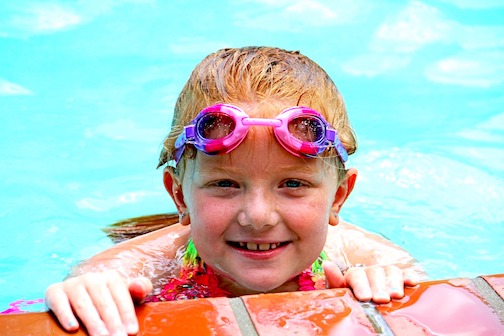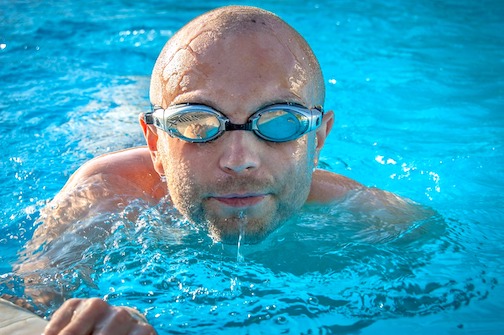Whether taking a dip indoors or out, you’re likely familiar with the burning and redness in your eyes that always seems to follow. The culprit tends to be chlorine, added to most swimming pools to prevent waterborne pathogens and diseases from spreading. In other words, it’s there to keep the yucky stuff out. What might surprise you, though is that chlorine to the pool doesn’t kill all the germs in pool water. Since you can’t be certain what’s floating on and in the water, wearing swim googles is always a good idea. They help you avoid eye irritation and keep your eyes protected against the not-so-great stuff.
Swim Goggles Aren’t Created Equally
 Swim goggles come in a variety of styles, but generally fall into two types: small socket and large socket. Small socket goggles rest directly on the skin under the eyebrow and inside the eye socket. These are the kinds of goggles that you saw a lot of if you tuned in for the Olympic games last summer. What’s great about them is that they’re lightweight and are keep water out well. They tend to adhere closely to your eye, which is important for both grownups and kids who may be competitive swimmers. For people who are more casual swimmers or who don’t like the pressure around their eyes, large socket goggles are the better choice. Large socket goggles have a rubber gasket around the lens and fit outside your eye socket. No matter which style you choose, the goal is to keep water out of your eyes while allowing you to see clearly. You should also make sure your vision isn’t obstructed by the lenses.
Swim goggles come in a variety of styles, but generally fall into two types: small socket and large socket. Small socket goggles rest directly on the skin under the eyebrow and inside the eye socket. These are the kinds of goggles that you saw a lot of if you tuned in for the Olympic games last summer. What’s great about them is that they’re lightweight and are keep water out well. They tend to adhere closely to your eye, which is important for both grownups and kids who may be competitive swimmers. For people who are more casual swimmers or who don’t like the pressure around their eyes, large socket goggles are the better choice. Large socket goggles have a rubber gasket around the lens and fit outside your eye socket. No matter which style you choose, the goal is to keep water out of your eyes while allowing you to see clearly. You should also make sure your vision isn’t obstructed by the lenses.
The Right Fit for Your Goggles
While there is definitely a pair of goggles for every face, not every face will fit every pair. An uncomfortable fit will spoil the fun (or keep you from wearing them), so always try swim goggles on before you buy. Here are a few tips: • To test the fit, before strapping to your head, press the goggle lens to your eye. If the fit is correct, suction will keep the lens in place for a couple of seconds. If it falls off immediately, it’s not the right one for you. • When goggles are strapped on, the entire seal of the lens should rest comfortably around your eye. • Spend a few minutes with the goggles strapped on so that you can feel the pressure on your eyes. Imagine whether you’d be comfortable enough to wear them for more  than 30 minutes at a time. To keep the head strap from slipping on your head while you swim, choose goggles with a wide, split strap made from silicone. Goggle straps should always be worn high on the head and in a horizontal line from the lenses.
than 30 minutes at a time. To keep the head strap from slipping on your head while you swim, choose goggles with a wide, split strap made from silicone. Goggle straps should always be worn high on the head and in a horizontal line from the lenses.
Seeing Clearly
One of the questions we get asked a lot is whether prescription lenses are available in swim goggles. The answer is “yes.” Prescription goggles are available to correct certain kinds of vision impairments. You can also get goggles that are polarized, tinted or mirrored. An amber lens, for instance, sharpens vision under water making it easier to see the bottom of the pool. The bottom line is that swimming goggles are designed to help protect your eyes, so be sure to find a pair you like. The better the look, fit and feel, the greater the likelihood is that you’ll wear them. That means you’ll be free to splash around worry-free.



